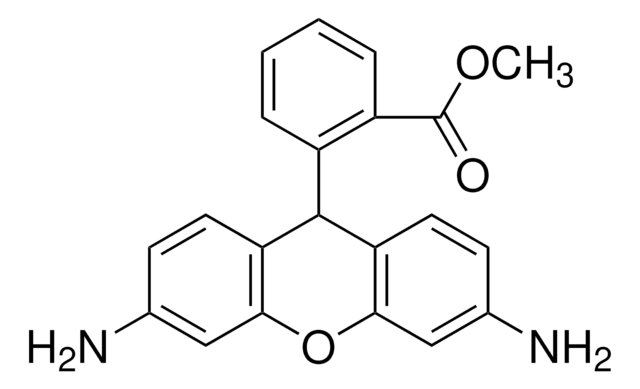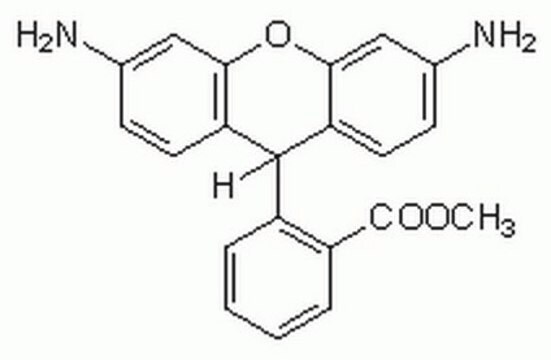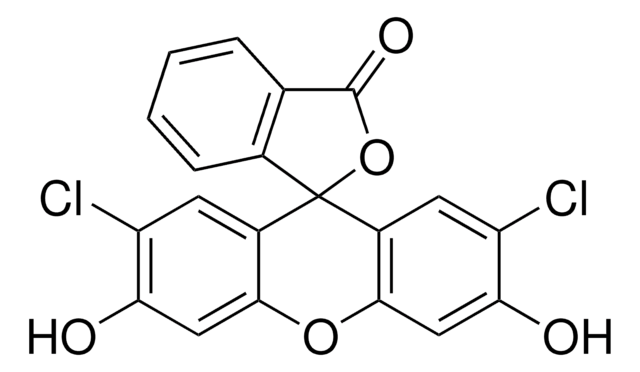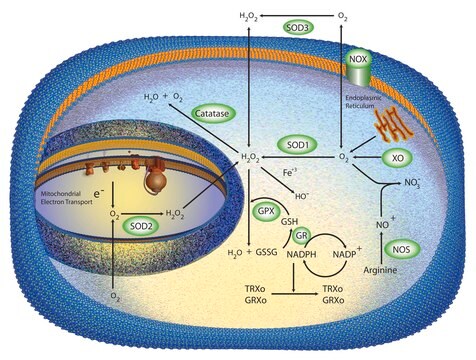309800
Dihydroethidium
A cell-permeable, chemically-reduced ethidium derivative.
Sinónimos:
Dihydroethidium, 2,7-Diamino-10-ethyl-9-phenyl-9,10-dihydrophenanthridine, DHE
About This Item
Productos recomendados
Nivel de calidad
descripción
RTECS - SF7935000
Ensayo
≥95% (HPLC)
Formulario
solid
fabricante / nombre comercial
Calbiochem®
condiciones de almacenamiento
OK to freeze
protect from light
color
pink
solubilidad
DMSO: 20 mg/mL
DMF: soluble
Condiciones de envío
ambient
temp. de almacenamiento
−20°C
cadena SMILES
Nc1c2c(cnc1)c3c(cc(cc3)N)C(C2CC)c4ccccc4
InChI
1S/C21H21N3/c1-2-15-20(13-6-4-3-5-7-13)17-10-14(22)8-9-16(17)18-11-24-12-19(23)21(15)18/h3-12,15,20H,2,22-23H2,1H3
Clave InChI
ZDWPSSBKIMIPMY-UHFFFAOYSA-N
Categorías relacionadas
Descripción general
Acciones bioquímicas o fisiológicas
Useful fluorogenic probe for the detection of reactive oxygen species (ROS)
Envase
Advertencia
Reconstitución
Otras notas
Mancini, M., et al. 1997. J. Cell Biol.138, 449.
Carter, W.O., et al. 1994. J. Leukoc. Biol.55, 253.
Cinco, M., et al. 1994. FEMS Microbiol. Lett. 122, 187.
Perticarari, S., et al. 1994. J. Immunol. Methods 170, 117.
Perticarari, S., et al. 1991. Cytometry 12, 687.
Bucana, C.D., et al. 1990. Exp. Cell Res.190, 69.
Rothe, G., and Valet, G. 1990. J. Leukoc. Biol.47, 440.
Información legal
Código de clase de almacenamiento
11 - Combustible Solids
Clase de riesgo para el agua (WGK)
WGK 3
Certificados de análisis (COA)
Busque Certificados de análisis (COA) introduciendo el número de lote del producto. Los números de lote se encuentran en la etiqueta del producto después de las palabras «Lot» o «Batch»
¿Ya tiene este producto?
Encuentre la documentación para los productos que ha comprado recientemente en la Biblioteca de documentos.
Los clientes también vieron
Nuestro equipo de científicos tiene experiencia en todas las áreas de investigación: Ciencias de la vida, Ciencia de los materiales, Síntesis química, Cromatografía, Analítica y muchas otras.
Póngase en contacto con el Servicio técnico










